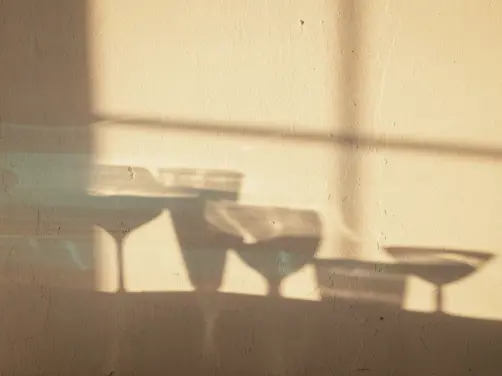Non-alcoholic drinks are in vogue
Wine consumption is declining. Customers are increasingly requesting non-alcoholic drinks. The industry is also undergoing rapid development. Wine expert Peter Keller sheds light on the unstoppable trend, describes the innovations and explains why the catering trade needs to have non-alcoholic products.

Where does the trend for non-alcoholic drinks come from?
Non-alcoholic beverages have developed from being a niche product to a rapidly growing market segment. This dynamic development began a good ten years ago and is primarily due to people becoming more aware of health and wellness issues. People are consciously looking for tasty alcohol-free alternatives to wine, beer or spirits.
Are there any innovative products that would meet these needs?
Consumers are not just requesting banal fruit juices, but drinks that promise added value, as Victoria Banaszak, founder of the start-up ve-Refinery (ve-refinery.ch), which specialises in non-alcoholic drinks, explains. Natural, organic, low-calorie and low-sugar ingredients should be used, and possibly even fortified with vitamins and minerals. Authentic and innovative flavours are essential for ensuring customer satisfaction. Fermented drinks such as kombucha, kefir and non-alcoholic craft beers are also becoming increasingly important.
What does the customer structure look like?
It may come as a surprise, but the range of customers for non-alcoholic alternative drinks is astonishingly broad. It doesn't just include people who are teetotal, pregnant women or car drivers. Every consumer group is fond of non-alcoholic drinks, but none more so than the younger generation (Gen Z). Today, it is no longer a disadvantage from a social point of view to not drink wine or beer – it's quite the opposite, in fact.
How widespread are the drinks in the catering trade?
Today, a good restaurant has to have an attractive range of non-alcoholic drinks. For example, in Restaurant Magdalena in Rickenbach (canton of Schwyz), which has been awarded two Michelin stars, the non-alcoholic drinks pairing option is more popular than the wine pairing. There is no drinks menu. The drinks are brought to the table as a surprise. The guests can guess what their glasses hold. This promises unique flavours for the guests to enjoy, including an elderflower granita, a verbena kombucha and a drink made from beetroot and cranberries, to name just a few examples.
Are there differences in quality?
Wines (and sparkling wines) cannot yet be compared with their non-alcoholic variants. But thanks to new and improved technologies, non-alcoholic wines are rising in quality. Better methods of removing the alcohol, such as vacuum distillation and reverse osmosis, ensure that the original flavour and aroma are retained to the greatest extent possible.
Difference between non-alcoholic wine and wine
The range of non-alcoholic wines is constantly growing. The main differences in the wines are the aroma, flavour profile, mouthfeel, sweetness, acidity and finish. Wines benefit from alcohol, which adds complexity, a full body, depth and taste perception. Non-alcoholic wines, on the other hand, have a less intense flavour and a less pronounced aroma due to the absence of alcohol as a flavour carrier.
Where are these wines produced?
The best facilities for non-alcoholic wines are in Germany. The company Kolonne Null has established itself as one of the leading producers. Similar products are also being produced in good quality in England. There is no production facility in Switzerland at the moment. As a result, local winegrowers are not yet in a position to produce alcohol-free wines. However, this could change in the medium term.
Where can you get non-alcoholic drinks and what should you look out for?
No serious wine merchant can do without a range of non-alcoholic drinks. The breadth and qualities vary greatly – just like the wine range. We also recommend contacting your trusted retailer for non-alcoholic variants. And the same also applies to wine – before buying, you should taste the product and see if it meets your expectations.
Words Peter Keller






